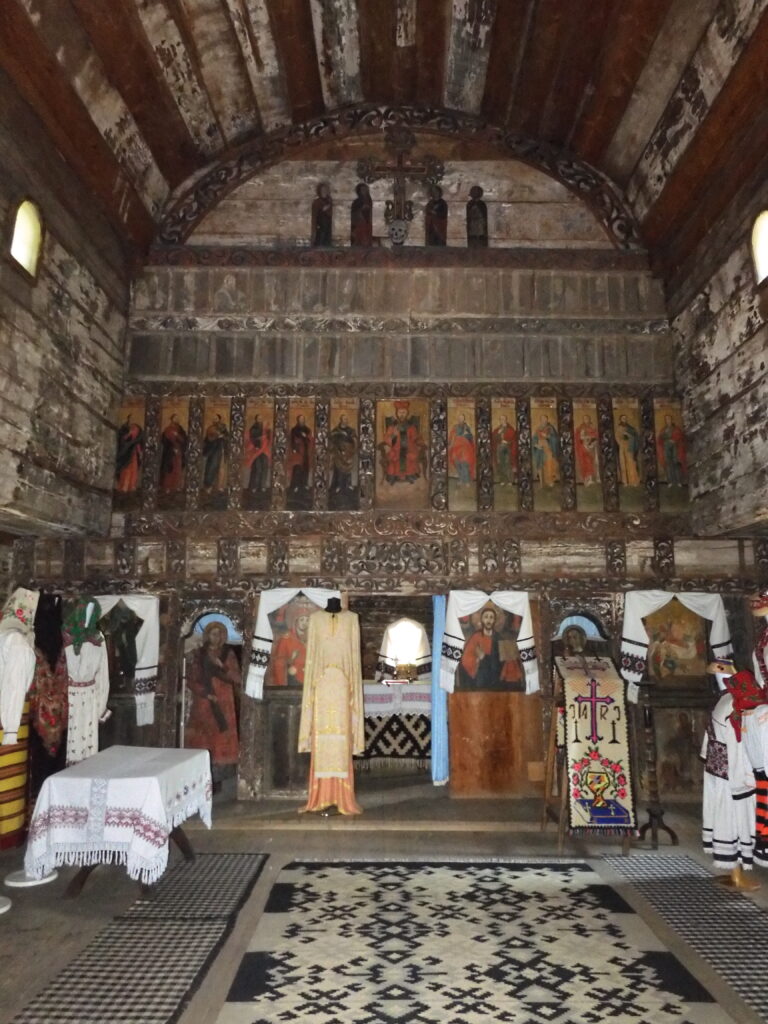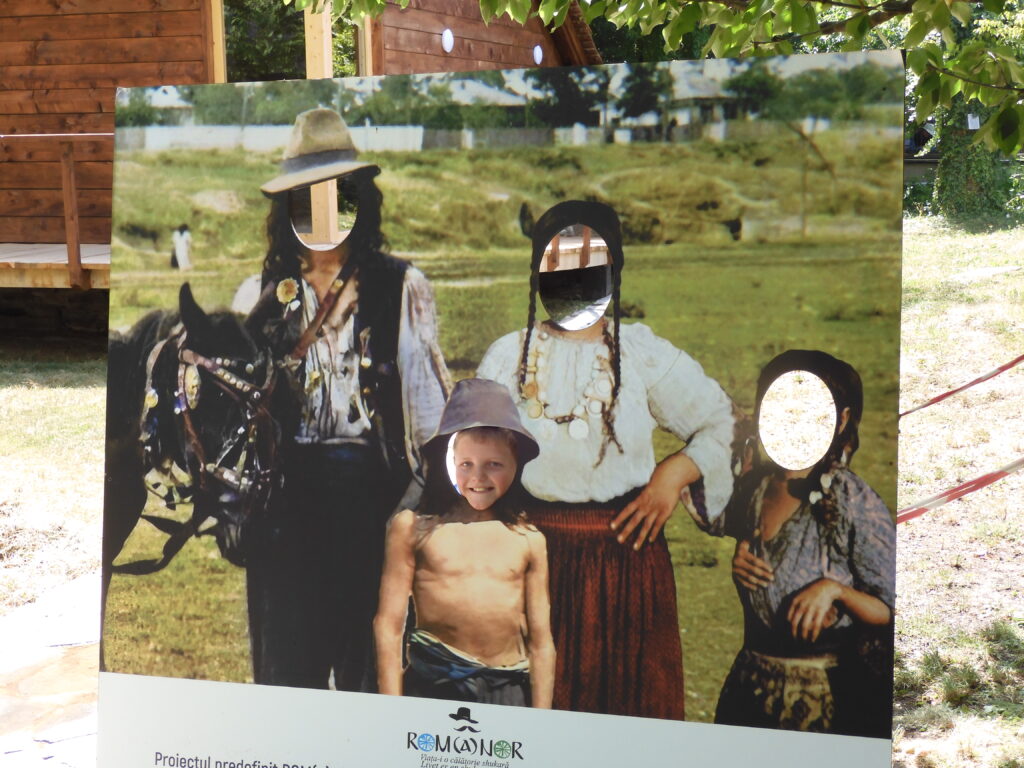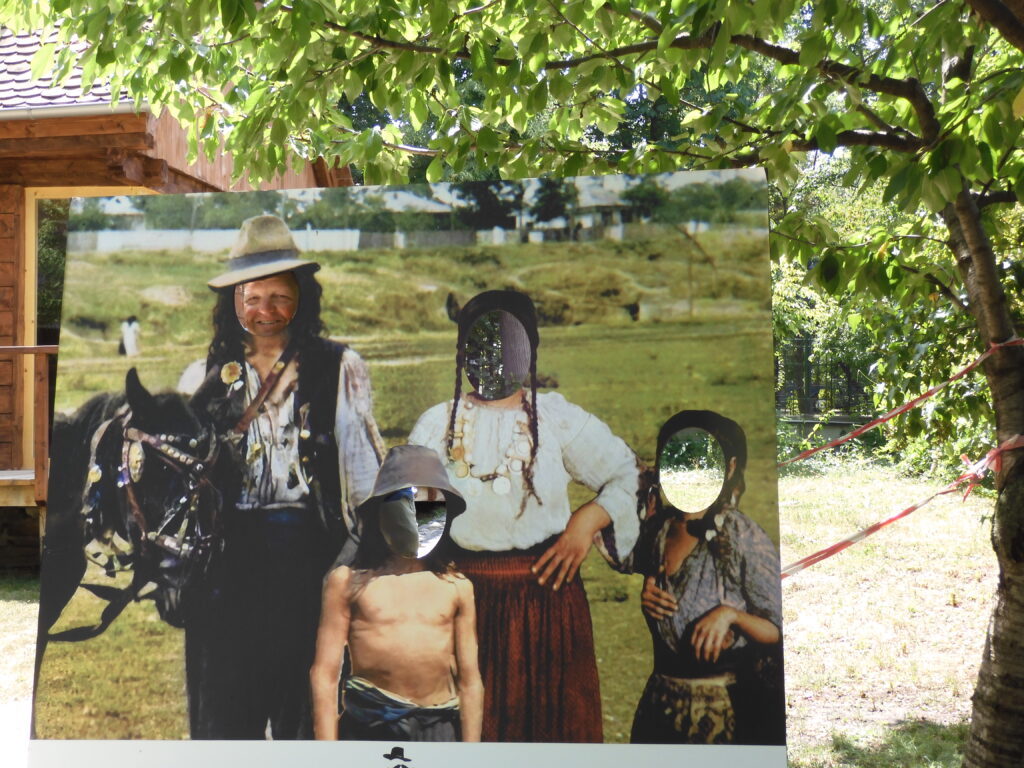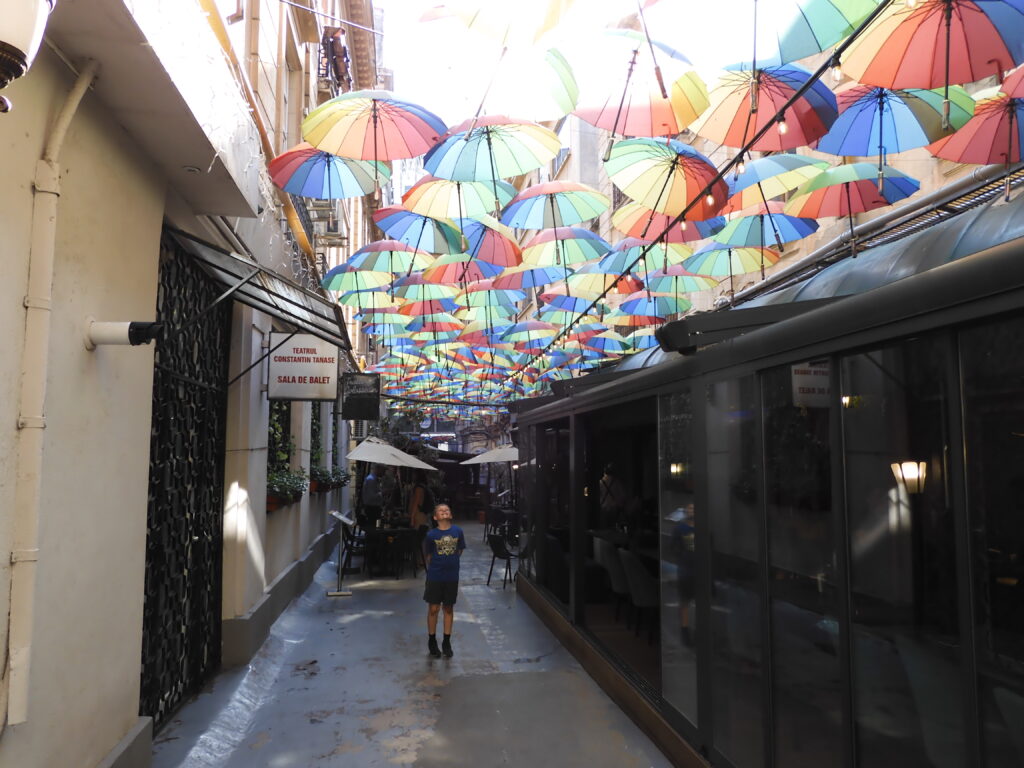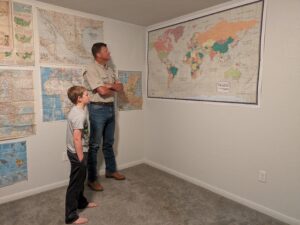Romania
Not So Far Removed From Communism
Our introduction to Romania actually started in Budapest. In an attempt to gain a new experience and to save on overnight accommodation, I booked a sleeper car on a train scheduled to leave Budapest, Hungary at 3:10 p.m., and arrive in Bucharest, Romania at 8:35 a.m. the following morning. We passed on hiring an entirely private compartment, opting instead for an air conditioned four person billet in which the seats folded into a lower set of bunks, with a permanent overhead bunk. In its communist era, the Romanian government of course operated the railroads. When the government was toppled in 1989, the railway company was broken up into a passenger rail company, a rail freight company, and a separate company managing the infrastructure, such a tracks, stations, bridges, and that sort of thing. So, the company providing us this service was essentially the Soviet-bloc era Romanian national rail system, with an additional 35 years to age – and the experience was about like trying to eat cheese that had “aged” 35 years.
The Budapest train station itself looked like a vestige from the Soviet era. It actually looked pretty cool, as if it were from some kind of 50s or 60s period spy movie. With communist (in)efficiency, the station was set up so that you had to again read a giant board to figure out which platform your train would leave from, then scurry over to it before the train left. Only in this case, some of the platforms – like ours – were about a half a kilometer from the board. I suppose the electronic board was not from 1989. We made it to our train in time, but none of the cars were labeled. We found a conductor taking a smoke break and had him help us identify our coach.
The train itself also looked like it could serve in a period piece, except that the tops and sides of the cars were rusted and there was diesel or oil running out of panels and down the sides of most cars. The steps to enter the car were big grates recessed into the side of the car itself, so that it was kind of like a six foot vertical ladder to get in – impossible to surmount with bags. I helped a couple of ladies heft bags in, and did the same for Caleb, before raising my own bag over my head and hefting it inside the car to climb in. It was the middle of the afternoon, and the train was stopped on a humid 33C day (in the low 90s F). The inside of the train was uncomfortably hot. Perspiration ran down my shirt and back. I could feel a cool surface on a mechanism that I supposed was the air conditioner, but it certainly wasn’t blowing anything out. Perhaps once the train began moving, the air conditioning would kick in as is sometimes the case in older vehicles. I decided to wait in the breeze out on the platform until the train was ready to leave. This provided some relief.
Once the train started down the tracks I went back into the car and met a young Swiss couple with whom we would share our compartment. They were sitting on the shaded side, so Caleb and I scrunched over toward the middle of the bench, out of the direct sunlight from the window. The air conditioning system at times oozed a bit of air, but other times, it kicked off altogether. Since our car was designated an A/C equipped accommodation, most of the windows had been sealed shut. In a stroke of luck, I discovered that one of the windows in our compartment had not been effectively sealed. I asked the Swiss couple of they minded if I tried opening the window. They initially agreed, and a blissful whoosh of fresh air – and admittedly quite a bit of noise – entered our sweltering cube. I considered the noise a welcome trade off for the air flow, but after a few minutes the waifish little Swiss fellow said the air pressure was hurting his ears, and begged me to shut the window. I reluctantly did so, but then went out to stand in the hallway along the opposite side of the car where I found another unsealed window.
Standing in the hall next to a window would not be especially comfortable for an entire sixteen hour train ride, so I decided to explore the rest of the train. This is when I discovered that there was also no available food or potable water. I had suspected this, and packed plenty of food and a liter of water apiece. One of the three air conditioned cars had only seats. The AC worked comparatively well in that car. Behind it, the second class cars had only seats and open windows. It was substantially more comfortable with the airflow, so I eventually packed a few of my things and sat in that area until we reached passport control.
Hungary, Romania, and Bulgaria have all signed onto the Schengen agreement. Signatories are supposed to have no border controls. When you pass from France to Belgium, for example, you may not even notice the sign, as they are less prominent than signs identifying the borders between U.S. states. Apparently, the Balkan states aren’t completely comfortable with this arrangement yet, as we underwent border inspections crossing into every new country after Hungary. I went back to our car to reduce the number of things that might have to be explained if I was in the wrong seat, or Caleb were by himself. I stayed there for a bit, munching on my food, visiting with neighbors, and trying to keep Caleb from overwhelming our compartment mates. Once they heard there was better air a couple of cars back, the Swiss couple decided to hang out back there for a bit. I stayed, because I knew there was passport control on both sides of the Romanian border. The Swiss folks were gone for a surprisingly long time. I thought perhaps they had gotten off the train to try to buy food or water at the Hungarian check point and maybe not made it on when we left. What had happened to them? They had been locked back in “steerage.” At a certain time, the conductor locks the sleeper car for the privacy of those who have reserved this more expensive ticket. After a brief scolding, they had been allowed back. The unfortunate consequence of this was that none of us could any longer access any of the other cars, either.
Not too long after 8:00 p.m., our Swiss companions made out their beds. They had been assigned BOTH of the bottom bunks. This left no seats in our compartment. Caleb and I were relegated to our upper bunks. You can imagine what the temperature was like in the upper foot of the car, with sealed windows and no air conditioning. I stood out in the hall, hanging my head out the one open window like a dog in a pickup truck. I could not do this forever, though, and there was now no other car where I could seek asylum. Eventually I gave up and crawled up into the stale, sultry, five-and-a-half foot bunk near the metal train roof. I did sweat all night, but surprisingly, I also slept some. I woke up with that clammy, pasty feeling of several layers of perspiration dried on top of one another. The Swiss couple did not get up until about eight o’clock. I can seldom sleep past six in the best of circumstances. Early in the morning, I crawled quietly down and walked to the bathroom, to give myself a non-potable sponge bath. It felt at least somewhat refreshing.
I looked outside. Beautiful farms rolled by at about 70kph. Hungary and Romania both have a lot of sunflower fields out in their flatter lands. We passed the occasional center pivot irrigation system. I saw some corn. There was more beardless wheat – the only kind I ever saw in Europe. The sunflowers and corn dominated this part of the world, though. I thought to myself, “You got some sleep. You are on a tour of the world, what do you have to complain about?” A warm feeling (a good one this time) overtook me as I thought about the blessing and freedom I had to do what I was doing. I was blessed that Caleb was with me. I was doing something I had always wanted to do, and this was just a funny part of the experience. It hadn’t ruined anything, other than perhaps advancing my laundry schedule one day. I am still glad we rode that train rather than just hopping on another FlixBus. If I had it to do over again, though, I think I would save the money and just buy a second class ticket.
(Continued)
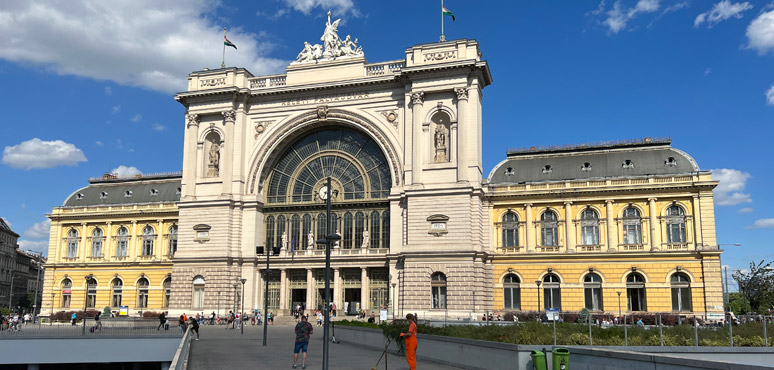
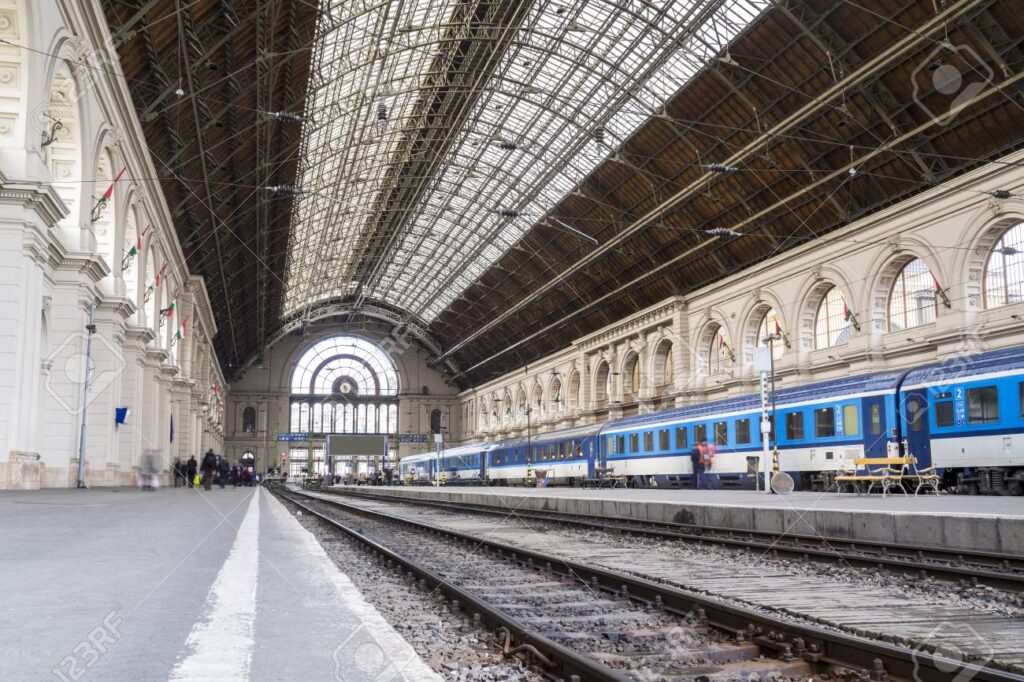

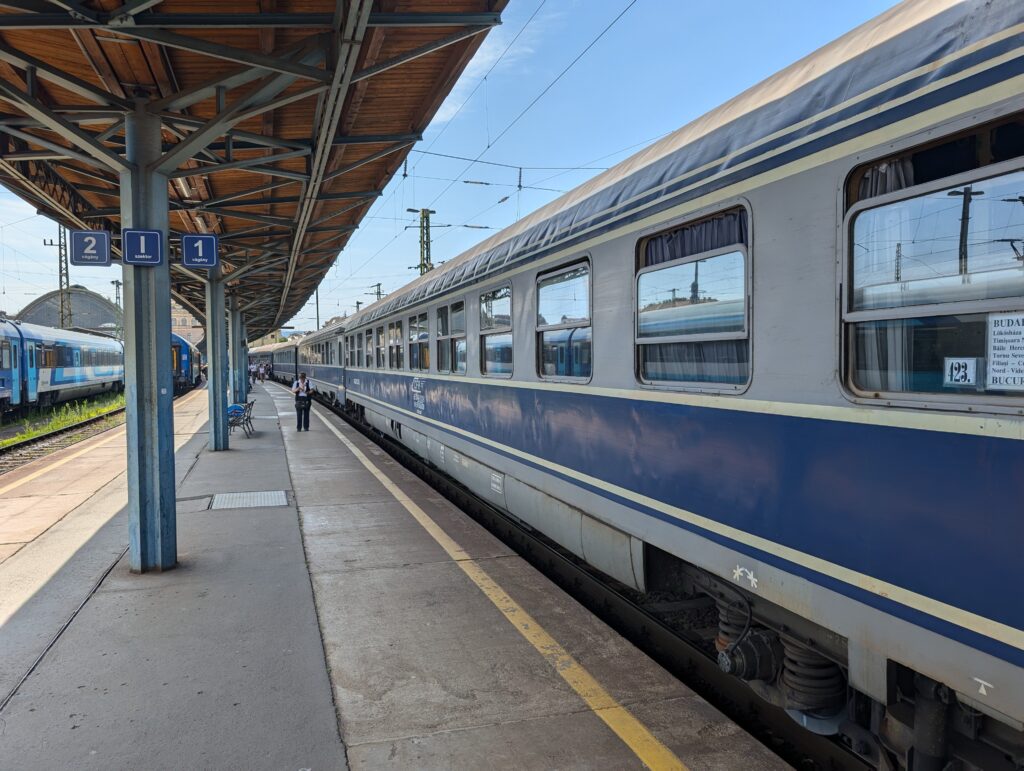

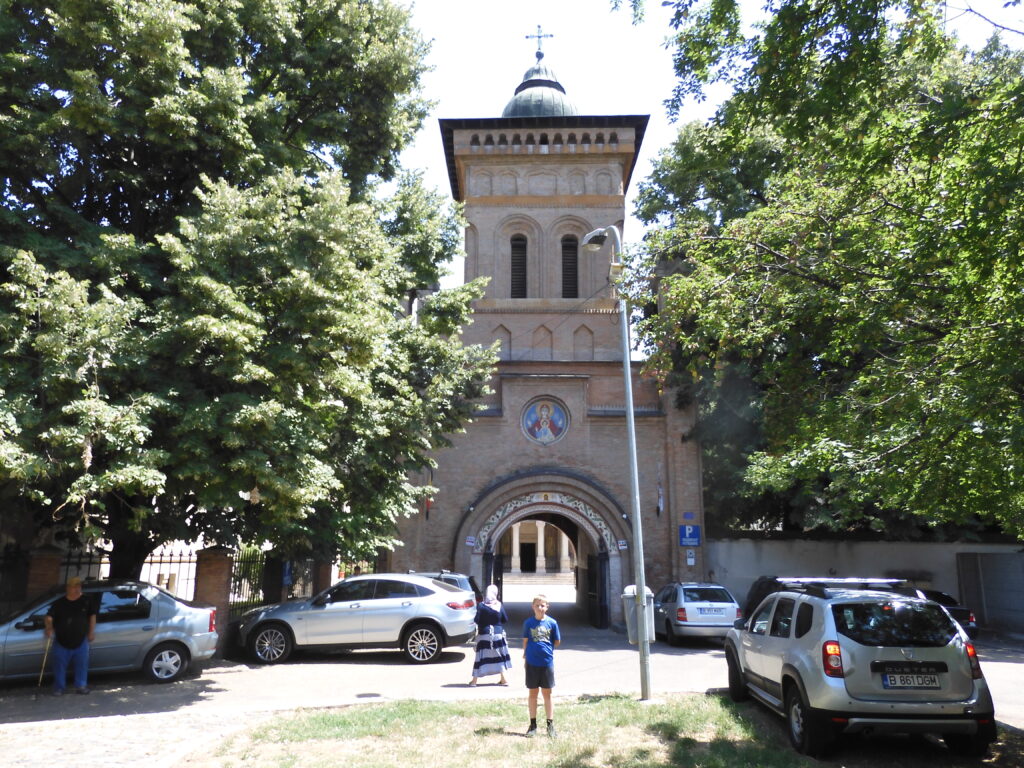
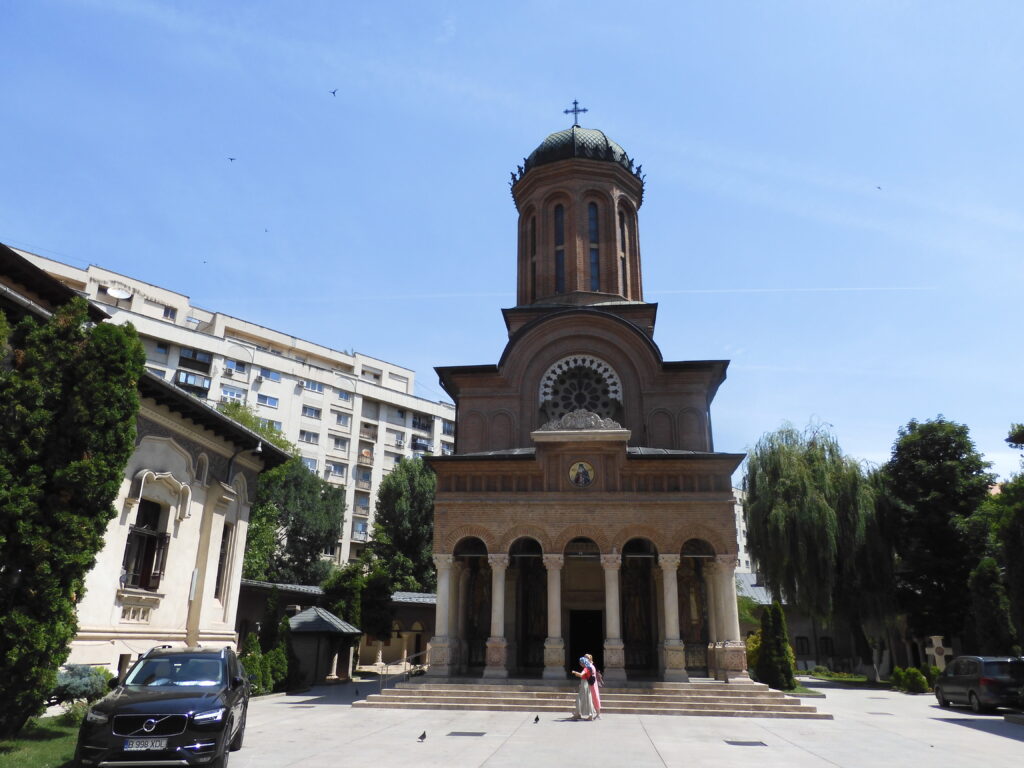
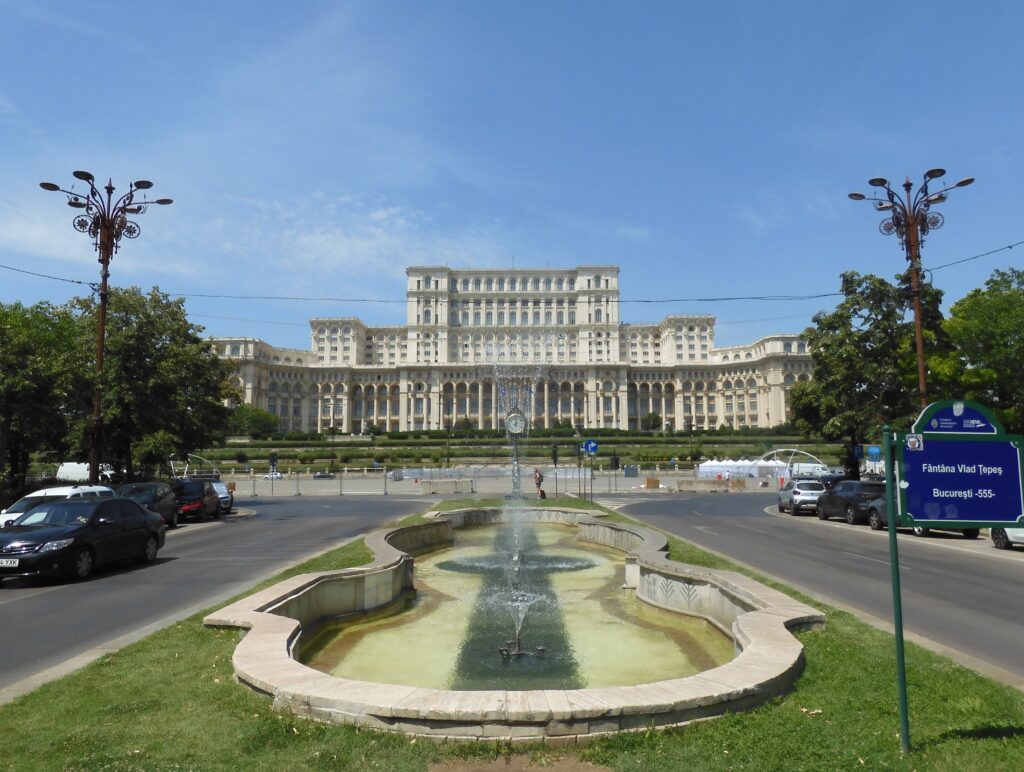
In keeping with the pattern, the Romanian state train rolled into Bucharest about two and a half hours later, for no apparent reason. Again, all this did was restrict our sight seeing by a couple of hours in Bucharest. To be honest, there isn’t all that much to see in Bucharest, anyway. We had a busy afternoon, but we saw everything we intended to see. Romania’s most visited tourist destination is “Dracula’s castle,” but this was too far away for us to see, and not really on my bucket list anyway. We stayed one night in Bucahrest, and then continued toward the Black Sea coast and Istanbul, where we would spend a bit more time.
From the mid-1960s until the collapse of communism in Romania, the country was ruled by the Romanian Communist Party General Secretary (dictator), Nicolae Ceausescu. Ceausescu initially gained widespread popularity in his own country, and among the leaders of western democracies by strongly denouncing the harsh Soviet handling of an anti-communist uprising in Czechoslovakia in 1968. He quickly burned through any political capital he gained from this position, however, as he soon earned the reputation as the most repressive Eastern Bloc leader. To make matters worse, although Romania has one of Europe’s best oil reserves, his botched handling of these resources created huge foreign debts. Middle Eastern oil embargoes in the 1970s led to Romania capitalizing on the same oil price spike that benefited Texas. Ceausescu used his favor in the west to borrow heavily to invest in refining capacity. He thought he could both refine Romanian oil, and also that of places like Iran, and then sell it to the west. A huge earthquake delayed those refining developments until the 1980s, when the international oil crisis was resolved and prices tanked (again, crushing Texas right along with Romania). Ceausescu attempted to pay the massive foreign debts down by exporting agricultural products. In the long run, he created significant domestic shortages and had to implement rationing.
He implemented severe bans on not only abortion, but even contraception to try to boost population. He created programs to try to make it so peasant workers could both grow crops and create industrial products. His handling of manufacturing even led to a mining strike against the “Red bourgeoisie.” In George Orwell’s Animal Farm, after the animals take over the farm, the pigs started looking a lot like the old farmers. A strike in a communist country proves he was right. All the while, Ceausescu was trying to make Romania a world power. He met foreign leaders. He built a massive parliamentary palace that is on record as being the heaviest single building in the world. He also lived a relatively opulent lifestyle. Eventually, the chickens came home to roost. All of the other Eastern Bloc countries were toppled in 1989, but underwent relatively bloodless transitions. Nicolae Ceausescu and his wife Elena responded to some nasty looking protests on December 17, 1989 by having the military open fire on the protesters. This backfired, and the Ceausescus attempted to flee the country. The military defected and they were captured, convicted in a two hour trial, and sentenced to immediate death by firing squad on December 25, 1989.
After setting off our bags at the hostel, Caleb and I went over to see this “heaviest building in the world,” the Parliamentary Palace. It is massive. You can tour the inside, but it isn’t all that old, or historically significant. The significance is that it represents the magnitude of Ceausescu’s vision for Romania, and the relative waste of a building of that size and cost when the country was dealing with so many other domestic issues. We could see all of that from the outside. The size is quite impressive, and you definitely get a sense of what Ceausescu wanted for Romania, and why that went over like a lead balloon.
Bucharest, like some of its neighboring Eastern European capitals, tries to bill itself as the “Paris of the East.” In keeping with this, long before Ceausescu, they built their own Arcul de Triumf. It is a much smaller version of Paris’s similarly named attraction. Bucharest’s was originally made of wood, but later upgraded to concrete sometime after World War One. This, too, we looked at from the outside. You can’t really go in it anyway, and we had already seen the real one.
One of the more interesting places we visited in Bucharest was the Dimitrie Gustie, which is the “National Village Museum.” Native peasant houses and work structures have been collected, moved, and reassembled from places all over Romania to be displayed in this place laid out like a little village. Each hut, mill, barn, etc., has an explanatory placard telling where the structure was from, who lived there, when it was built, and what they did with it. You can look inside of most of these buildings and see traditional household items as well. There are textiles, cookery, tools, etc. It was a cute idea. While each of these structures has been removed from its historical context, they were all moved to a place where they could be seen as a collection and appreciated for their diversity and show the nuances of buildings from one century to the next, one region to the next, and one purpose to the next. Caleb liked this stop as well, though it may have been partly due to the number of pettable stray cats.
(Continued)
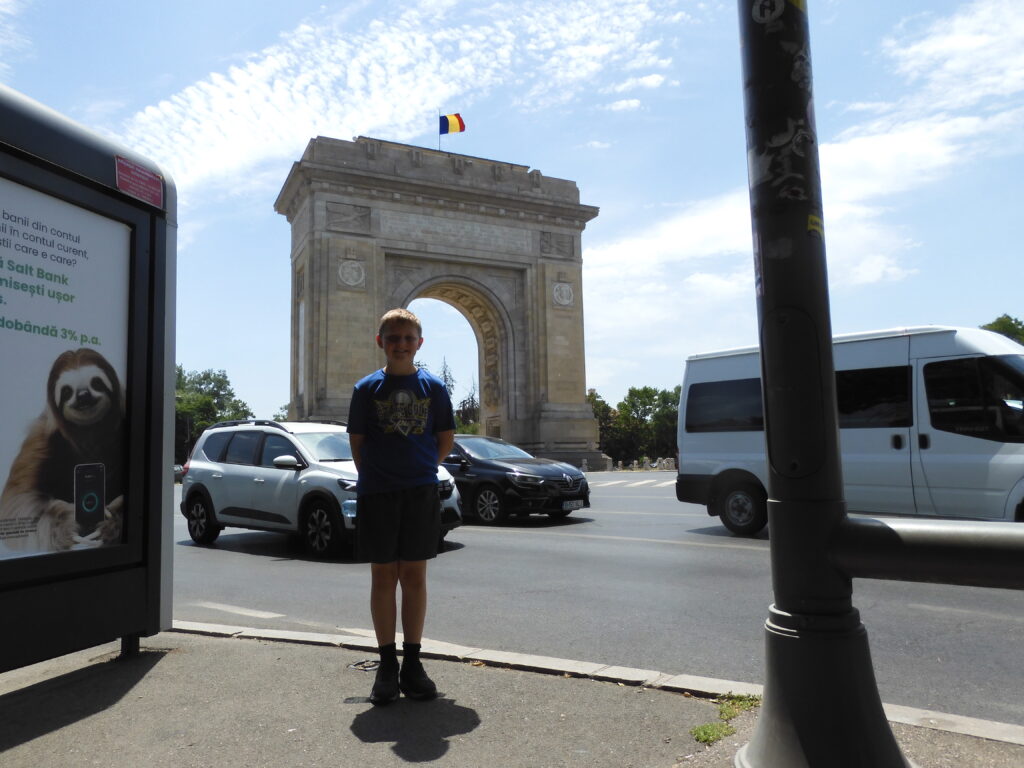

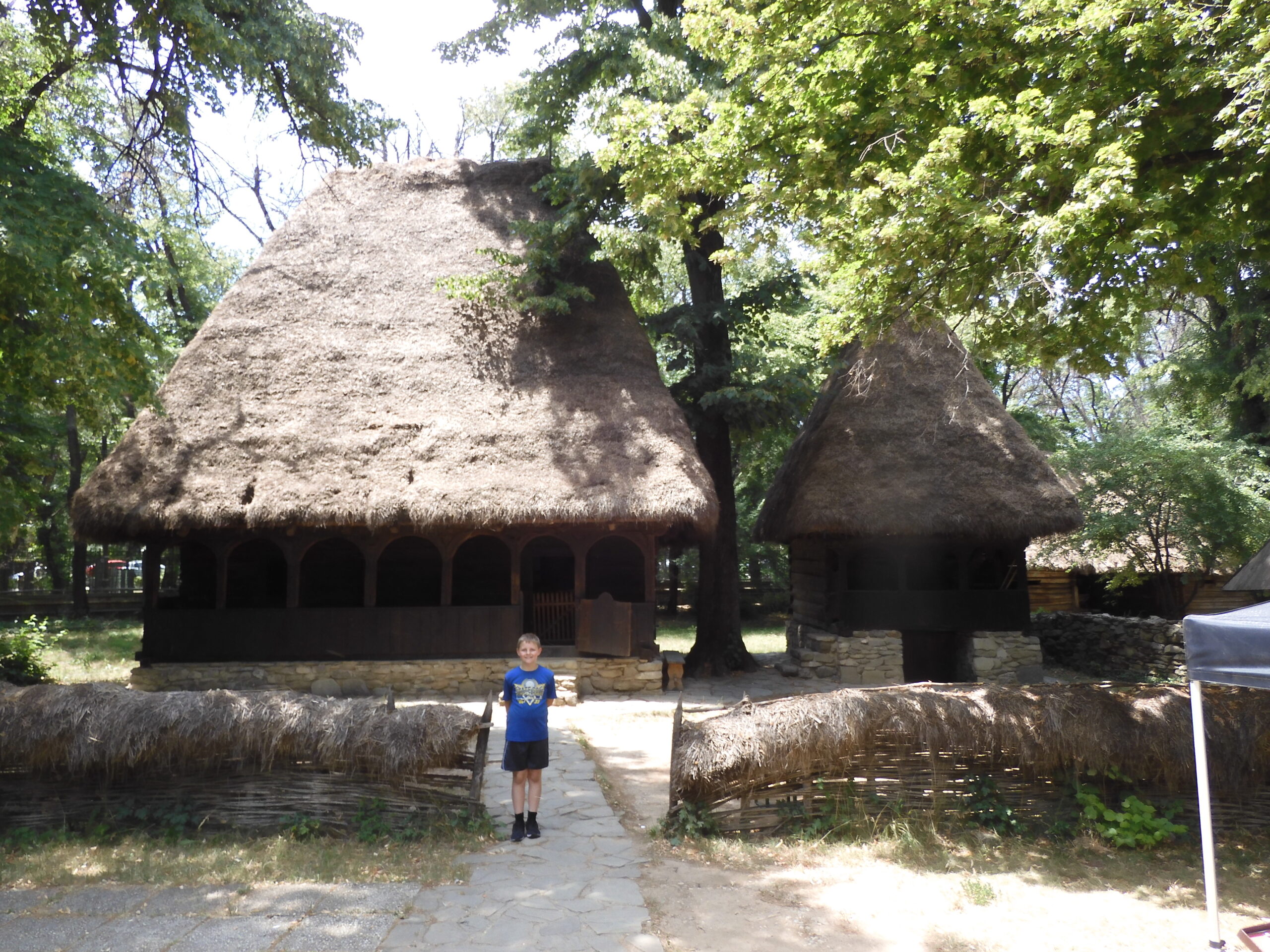

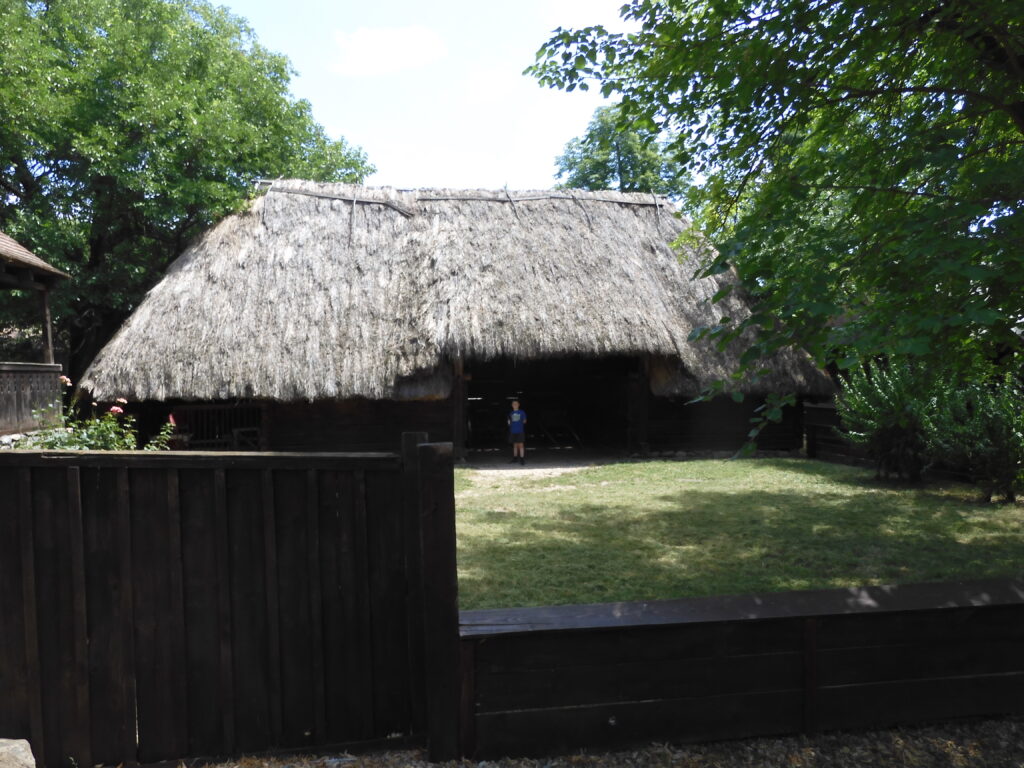
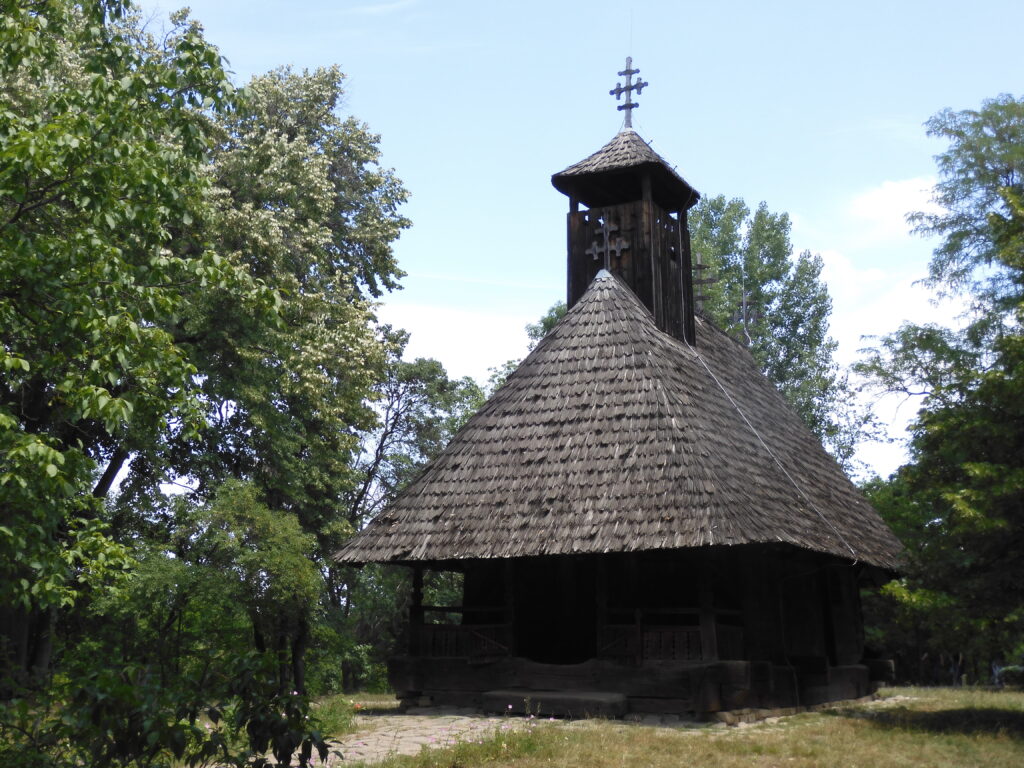

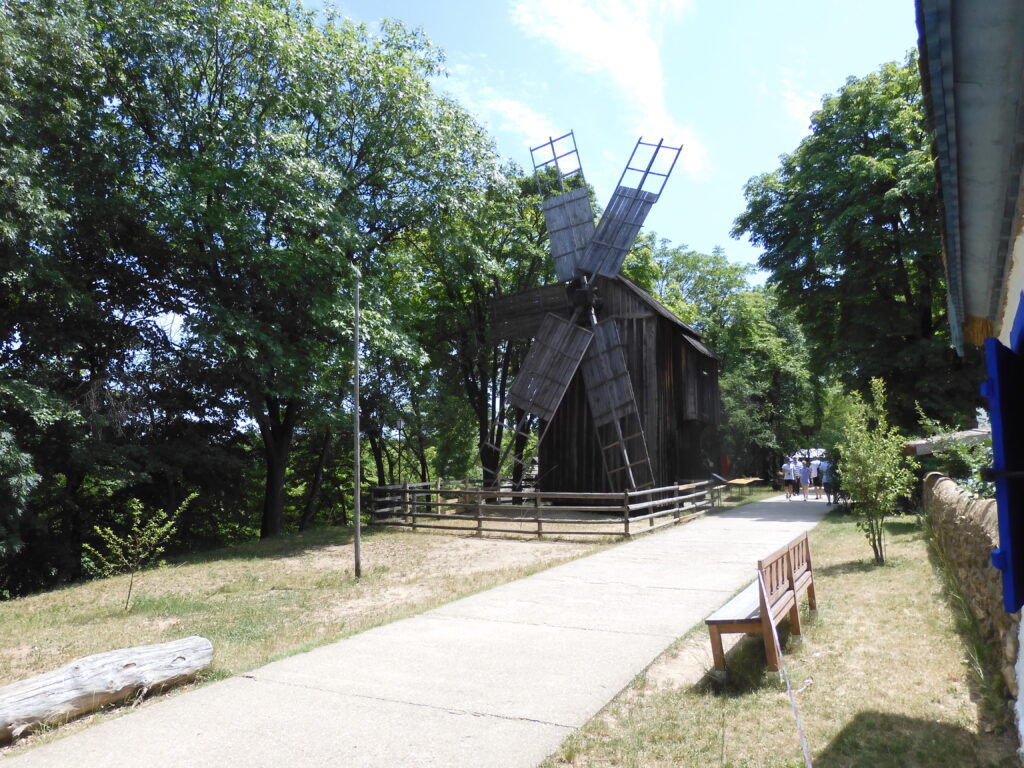



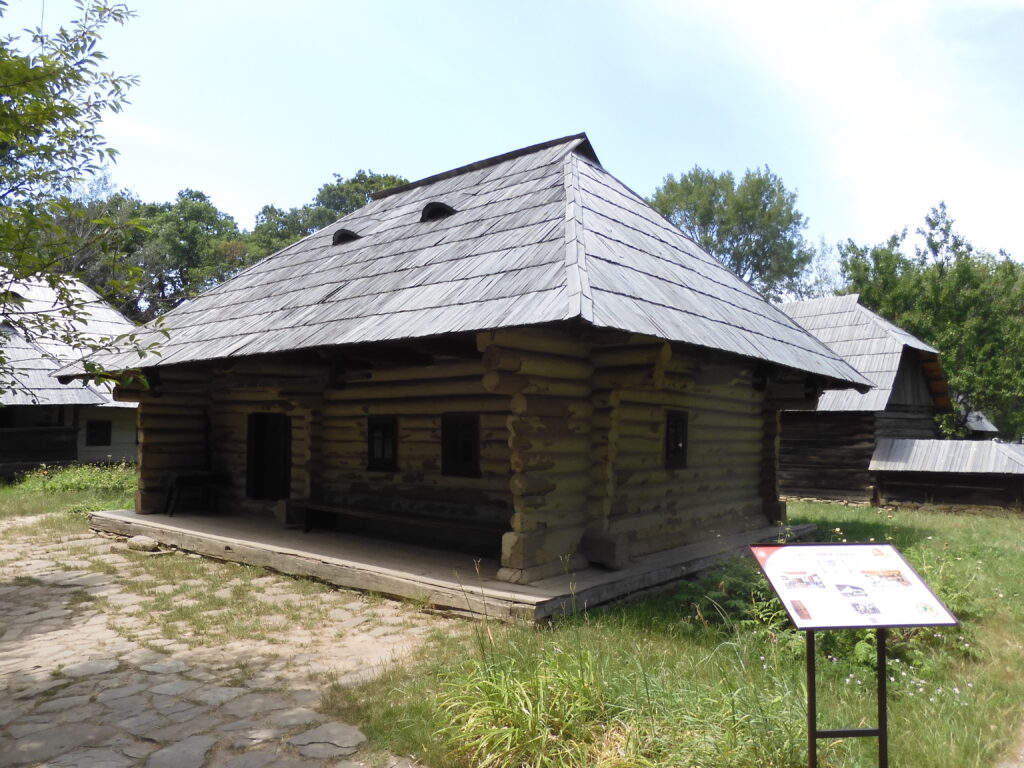
We grabbed an ice cream cone on our walk to the Casa Ceausescu, where we had a scheduled tour. One clear factor that led to the downfall of the Ceausescus was the fact that they lived in luxury while enforcing rationing and totalitarian dictates on the rest of the country. They lived in a fifty room mansion, which they had modeled after Versailles. It certainly was not a palace of the scale of a Versailles. They had, however, spared no expense having the place decorated in the Rococo style so nauseatingly pervasive at Versailles. One has to wonder if, in their last moments of life, the Ceausescus understood the irony of sharing a fate with some of Versailles’ residents who had also lived luxurious lifestyles while so many around them went without.
The Ceausescu mansion was replete with numerous beautiful mosaics. Nicolae apparently loved peacocks, so many of the mosaics and other pieces of art feature the colorful birds. There are a couple dozen peacocks still roaming the place, which they referred to as the “Spring Palace.” It had a “winter garden,” effectively a very large interior greenhouse with many exotic plants. They had a spa, a barber shop, a sauna, and an indoor pool. There were large apartments for their children, and Elena had her own “day suite,” where she could do her thing while Nicolae rested. He had to often rest in the afternoon, our tour guide explained in broken English, because he suffered from diabetes. Surprisingly, none of the household items were looted or destroyed. Our guide says this was because the military preserved them all as state property.
One other interesting component was Ceausescu’s television and cinema setup. He was apparently a great fan of Westerns, Kojak, and many other pieces of American video entertainment. This also should have been ironic, as Romanian state TV only aired two hours of programming per day, at the time, and that was purely Ceausescu propaganda.
I found it interesting that no political commentary was made whatsoever. There was a brief explanation that the Ceausescus were shot “by firing squad, after a trial of only two hours,” suggesting this may have not been completely justified. There was no discussion at all about why anyone would have been upset. No explanation of communism or Romania in the world; only a detailed description of the styles and provenance of all of the fancy things in the house. They explained how many of them were gifts, and who gave them and why. They were able to support the fact that, unlike Versailles, everything in the Ceausescu mansion is original and authentic. The degree that the presentation bends over backward to explain style over historical interpretation has to be intentional. It seems they have even intentionally hired only staff members young enough not to have been alive during the Ceausescu regime. It was an interesting place, for sure. Caleb said retrospectively that he liked it as well as the village museum, even if they didn’t have as many cats. It was definitely a “bring your own historical background” tour.
I also wanted to see the famous umbrella street on the Bucharest “must see” list. This is kind of cool, but definitely something you can walk through in a few minutes and have experienced. I got more out of our dinner, which we ate at a place touting its authentic Romanian cuisine. What we had was delicious and reasonable, if the portions were slightly smaller than what we were served in Hungary and the Czech Republic. I had a brasovanka appetizer – mushrooms and melted cheese wrapped in a crepe, sarmale – cabbage wrapped sausage, and a polenta side. It really was one of the better means I had on the trip. The appetizer was the best.
Our bus for the Bulgarian coast was set to leave early the next morning, so we headed back to our hostel and called it a night.

